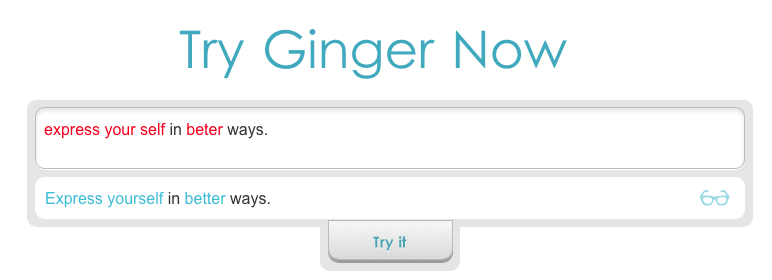If you never understood grammar in school, or if you learned English as a second or third language, you may be looking for a software tool to help. In this post, I’ll address the pros and cons of using automated writing tools. I’ll list three popular grammar checkers and two readability raters.
Automated Writing Tools
For ecommerce merchants, automated writing tools have a few drawbacks. First, product descriptions and blog posts may be full of non-dictionary words, including weirdly spelled brand names and super-specialized terms, like “MSDMs,” “hiphopped” or “nanowattage” — all are flagged by the checker built into Microsoft Word.
Second, an informal style often characterizes catalog copy, where grammatically incomplete sentences are an intrinsic part of the tone, and slangy expressions like “youse guys” sometimes get used to create rapport and humor. A tool that wags its fingers at intentional departures from standard English may be more annoying than helpful.
On the other hand, if your mastery of English grammar is shaky, a tool can usefully alert you that its’ – with the apostrophe after the “s” – is always incorrect and that you’re risking an error with “there’s” or “theirs.” A good tool will also flag inadvertent repetitions, like “the the,” and mangled words, like “lihgt” instead of “light” or “insted” rather than “instead.” It will highlight punctuation mistakes and suggest valid corrections for them without adding new blunders.
A good tool will also flag inadvertent repetitions, like “the the,” and mangled words, like “lihgt” instead of “light” or “insted” rather than “instead.”
Top 3 Grammar Tools
With those limitations noted, here are three popular grammar checkers. The prices and options may change frequently.
Grammarly. Almost everyone I consulted rated this tool as the most accurate grammar checker. The free version comes as a browser extension for Chrome, Safari, Firefox, and Internet Explorer, an add-on for Microsoft Office, and an app for iOS and Android. The free version notifies and fixes more than 150 kinds of errors, including capitalization mistakes, missing and unnecessary commas, and usage flubs.
The premium version, which runs $29.95 a month or $139.95 a year, works the same way but provides more assistance — 250 kinds of errors. All versions allow you to select between American, British, Canadian, and Australian English. Grammarly is an Internet application; it may not work well if you have a spotty connection.
WhiteSmoke provides much the same kinds of mistake highlighting and suggestion improvement as Grammarly. But it does not have a free version. Prices are (a) $2.50 a month or $9.95 a year for the mobile app (iOS and Android), (b) $9.95 a month or $79.95 a year for a desktop download, and (c) $14.95 a month or $119.95 a year for a browser-based system. Some users have complained that access to the program was blocked by anti-virus software.
Ginger offers (a) downloadable software for Windows and Mac, (b) browser extensions for Chrome and Safari, and (c) apps for iOS and Android. Ginger flags and corrects spelling and grammar mistakes but not punctuation errors. The free version lets you analyze a relatively short passage of text. Prices for unlimited usage run $11.98 a month, $23.97 a quarter, or $59.88 a year.
Ginger includes a useful bonus: an audio reader that speaks your text, enabling you to hear (and then correct) some of your mistakes. But are you going to trust a language tool that published this sentence on its own website: “…ensures that your sentence structure, grammar, spelling and punctuation is perfect”? (It should be “are” perfect.)

Ginger enables you to copy and paste your text into a box to see the software’s grammar comments and corrections on your prose.
2 Readability Raters
If you’re serious about improving your writing, consider a readability tool. They enable you to copy text from, say, your website, newsletter, or blog and learn the educational level it’s suited for.
Unless your audience is exceptionally well educated, aim for an eighth-grade or ninth-grade reading level. That’s the level of TV Guide and Reader’s Digest, among the most widely circulated magazines in English. If your prose scores above ninth grade, make it more readable by shortening sentences and simplifying your word choices.
Readability Test Tool. Either copy and paste text into the online interface or insert the URL of a web page. After a click, the tool gives you results from six different readability formulas and an average reading grade level calculated from those results. There is no cost.
Perry Marshall’s Grade Level Indicator was created for copywriters. It lets you copy and paste your text into an input box, and then click and receive scores from five readability formulas. As a bonus, you also receive a score indicating the ratio of writing about yourself — instances of “I” and “we” — versus writing about the reader. This tool is free, too.